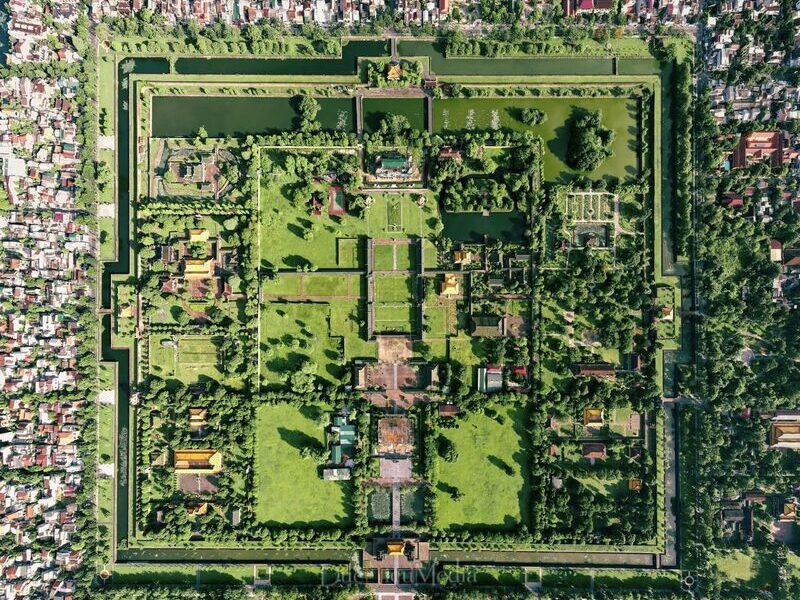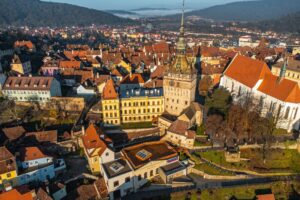Vietnam is increasingly attracting more international tourists to visit and learn about local life with a variety of segments from budget to high-end. With countless beautiful landscapes and resorts, it is impossible to summarize all the tourist symbols in a few sentences. In this article, Hanoi Green Tour will list 14 highlights when traveling to Vietnam stretching from north to south for tourists to refer to.
- Bach Long Glass Bridge
Recognized by Guinness World Records as the longest glass-bottomed pedestrian bridge in the world with a total length of 632 meters. Bach Long Glass Bridge is located in Son La Province. Located about 10 km from the center of Moc Chau district, Bach Long Glass Bridge belongs to Moc Chau Island tourist area, a complex of entertainment and resort areas in the majestic space of the Northwest mountains and forests.

The most ideal time to conquer Bach Long Glass Bridge is when the sky is clear and cloudless. The bright yellow sunlight will help you fully admire the majestic beauty of the overlapping mountain ranges and cool green valleys. Imagine you are standing on the glass bridge, feeling like you are touching the clouds, the scene before your eyes will surely amaze you. Each season in Moc Chau brings its own beauty. From spring with peach blossoms and plum blossoms in full bloom, summer with the fresh green of the mountains and forests, to autumn with the brilliant yellow of wild sunflowers and winter with the chilly air, all are wonderful experiences that you should not miss.
- Dien Bien Phu battlefield
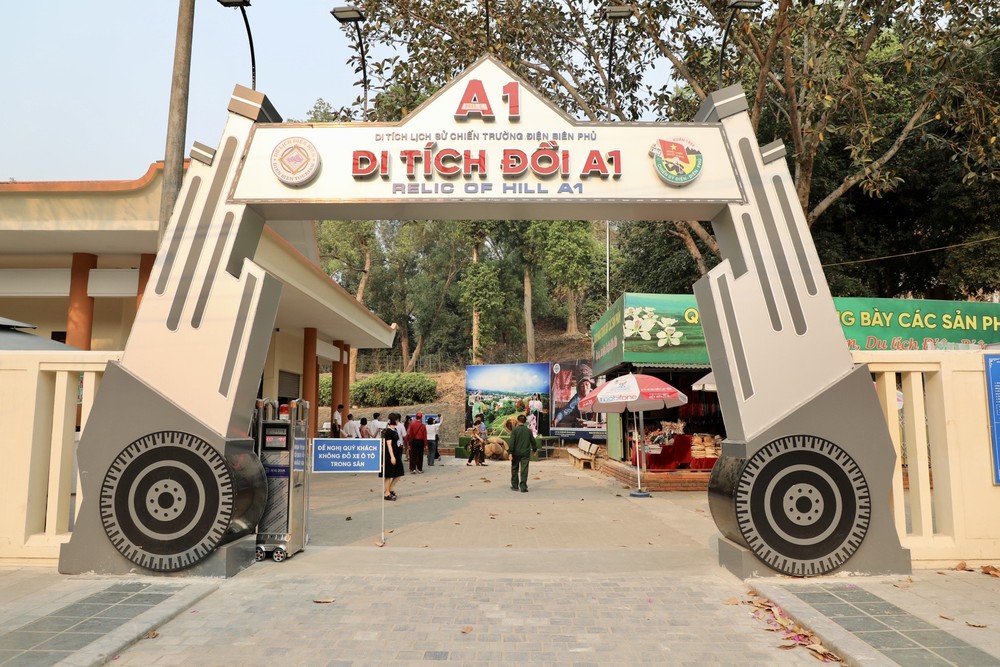
Dien Bien Phu battlefield relic site is where the victory of the Vietnamese People’s Army over the French colonialists took place, marking the collapse of colonialism worldwide. Dien Bien Phu battlefield relic site consists of 45 component relics including prominent relics such as: A1 Hill, Doc Lap Hill, Hong Cum stronghold, Him Lam, Muong Thanh bridge, Dien Bien Phu stronghold command bunker (or De Castries bunker), Victory Monument, Artillery Pulling Monument, Dien Bien Phu Campaign Command Headquarters… To get to Dien Bien Phu battlefield relic site in Dien Bien province, visitors can fly directly to Muong Thanh airport or go by road. Avoid going during the rainy season due to frequent landslides on the way.
- Fansipan Peak

Known as the “Roof of Indochina”, Fansipan is the highest mountain in Indochina with an altitude of 3143m, located in Lao Cai province, Vietnam. Fansipan is about 9 km southwest of Sa Pa town, located on the border of Lao Cai and Lai Chau provinces. The ethnic people here call Fansipan “Hua Xi Pan” and means a giant precarious rock. If you go to Fansipan in spring or summer, you will have the opportunity to see the bright red rhododendron forests. In autumn, you will admire the golden terraced fields. If you come here in winter, you will have the opportunity to enjoy the cold of ice and snow. Currently, to reach the top of Fansipan, visitors can choose to hike from Hoang Lien National Park or take the cable car from Fansipan cable car station depending on their preferences. For adventurous and mountaineering tourists, Fansipan is a favorite destination. The feeling of conquering the roof of Indochina with your own feet will bring excitement to visitors.
- Mu Cang Chai rice fields
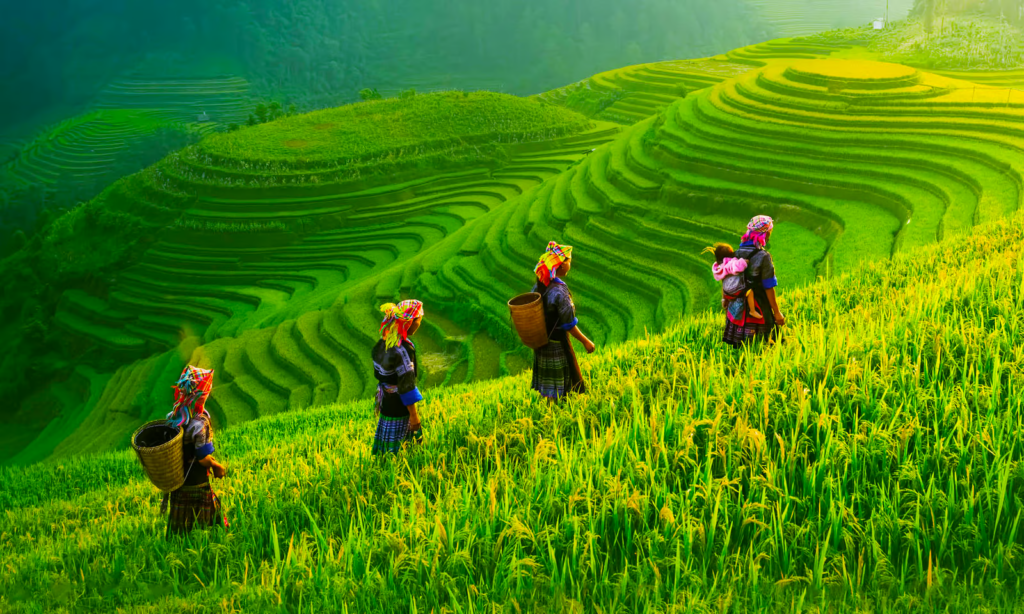
With fresh air and peaceful life, Mu Cang Chai rice fields in the ripe rice season are as beautiful as a watercolor painting. The terraced fields of Mu Cang Chai rice fields are known as the most beautiful in Vietnam and the period from September to October will be the best time to visit Mu Cang Chai. Not only famous for its terraced fields, Mu Cang Chai is also a place to preserve the unique traditional cultural values of the H’Mong people. Coming here, visitors will have the opportunity to participate in traditional festivals, explore traditional crafts and enjoy specialties of the highlands. During the ripe rice season, Mu Cang Chai is bustling with festivals, from the new rice festival to traditional competitions such as rice harvesting and weaving competitions. This is an opportunity for people to express their gratitude to nature and pray for a bountiful harvest.
- Dong Van Stone
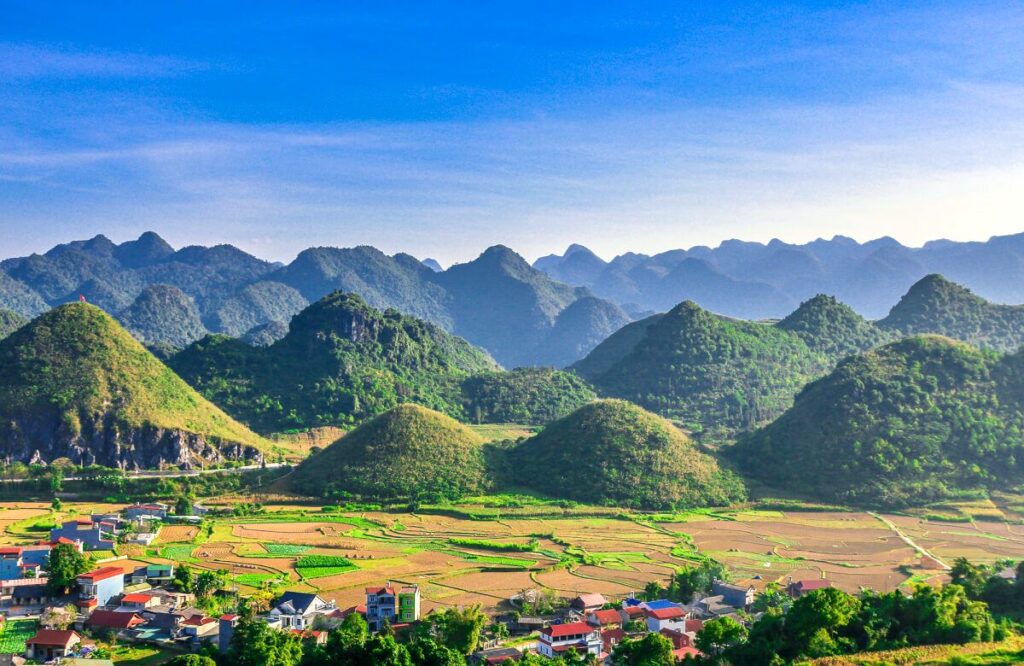
Plateau Unesco Global Geopark Dong Van Stone Plateau is at an average altitude of 1,000 – 1,600m above sea level on an area of over 2,354km². This is one of the special limestone areas of Vietnam, with a strong attraction for tourists and scientific researchers because they contain typical marks on the history of the development of the earth’s crust. Appearing 550 million years ago, visitors to Dong Van Stone Plateau can see with their own eyes the traces left in important paleontological, stratigraphic, geomorphological, tectonic, karst, cave and fault sites.
- Ha Long Bay
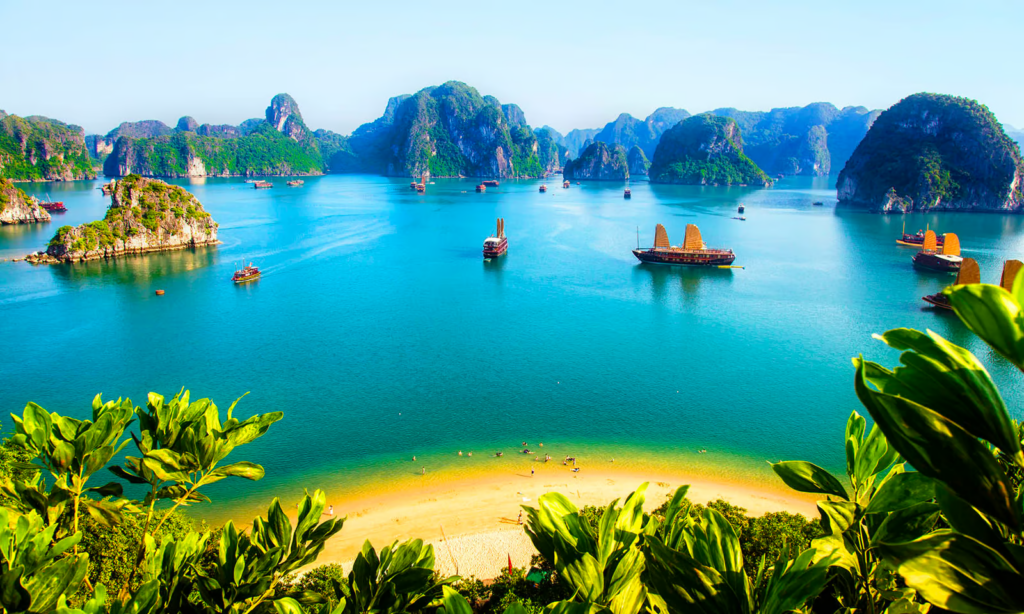
World Natural Heritage Ha Long Bay has stunning natural landscapes and typical, unique ecosystems. Ha Long Bay is located in the North, so the climate has 4 seasons. April-June is warm and rainless, June-August is hot and sunny with possible storms, September-December is cool and cold. Each season here has its own beauty, in the summer you come to Ha Long to swim and sunbathe, while spring and autumn are cool and suitable for viewing a less noisy Ha Long and participating in outdoor activities as well as exploring entertainment areas. The peak season is from June to August, the city is crowded, especially on weekends.
- Turtle Tower, Hoan Kiem Lake
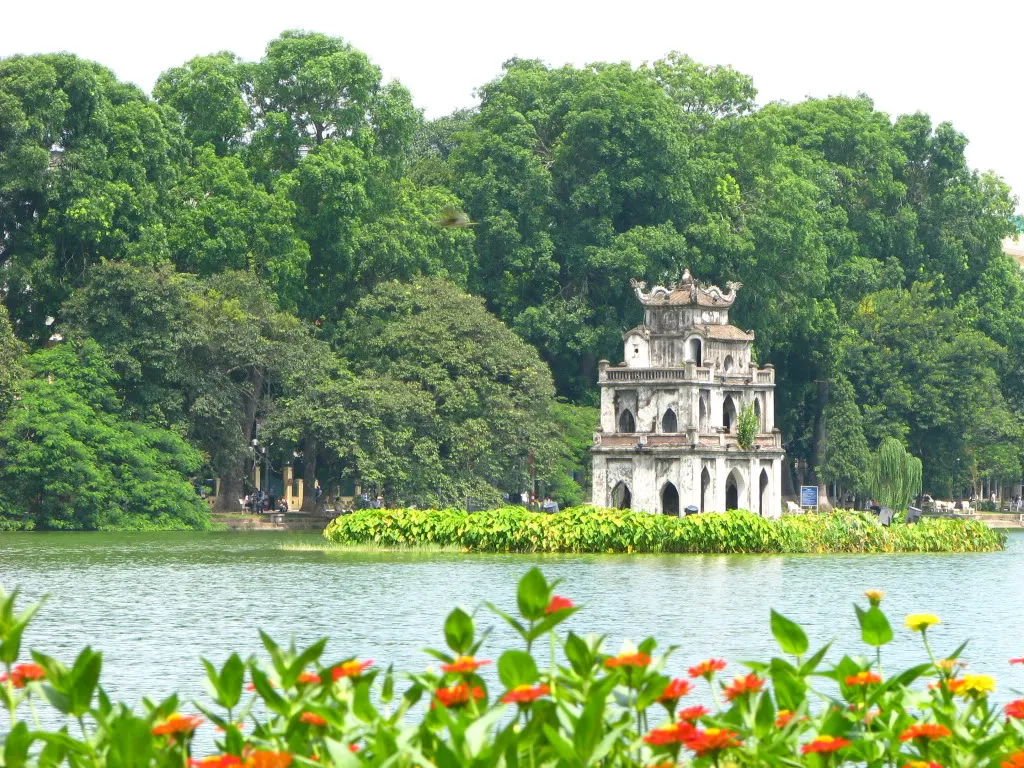
Turtle Tower is located in Sword Lake (also known as Hoan Kiem Lake), the center of the thousand-year-old capital of Hanoi. You can visit Turtle Tower at any time of the year because each season Turtle Tower has its own beauty. Especially when coming to Turtle Tower in the fall, you will feel the strong scent of milk flowers throughout the streets of Hanoi in the cool weather mixed with the fragrant green of young rice. In addition, when the rows of ancient trees along the lake are sparsely shedding yellow leaves, you will feel the most peaceful when visiting Hanoi.
- Son Doong Cave
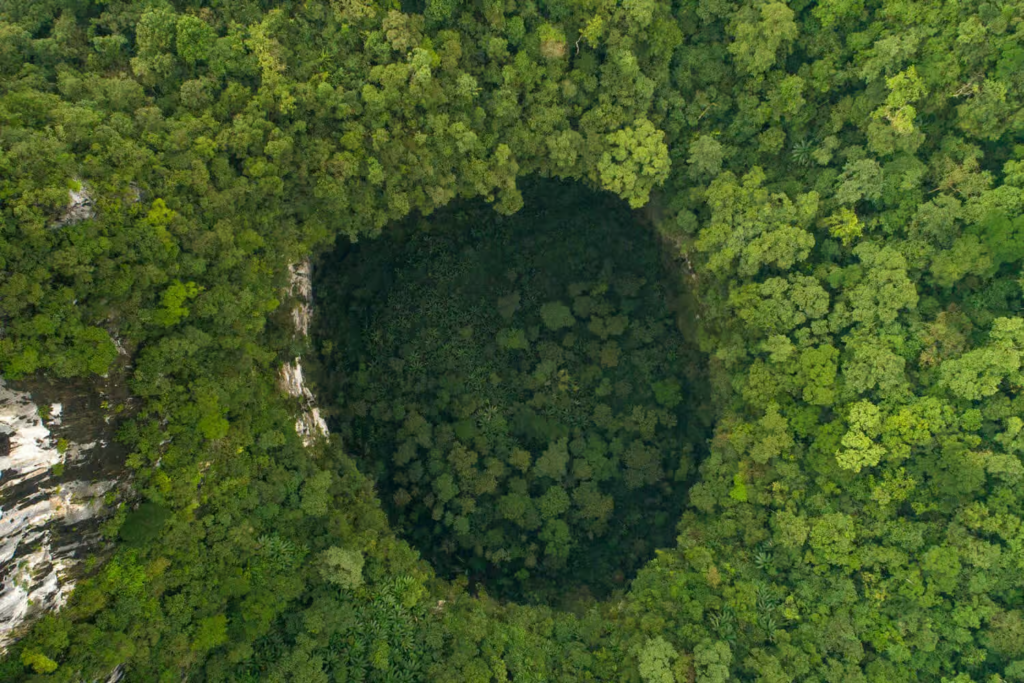
Son Doong Cave was formed about 2-5 million years ago and is certified by Guinness World Records, the World Record Association as the largest in the world, with a width of 150 meters, a height of more than 200 meters, and a length of nearly 9 kilometers. The cave is located in the Phong Nha-Ke Bang cave complex – the largest national park in Vietnam. To travel to Son Doong Cave, visitors need to book in advance and have good trekking experience because Son Doong Cave Tour only accepts 1,000 visitors per year and the exploration season lasts from January to the end of August.
- Hue Forbidden City

Hue Forbidden City is the citadel in the ancient capital of Hue, the capital of the Nguyen Dynasty for 143 years from 1802 to 1945. Currently, Hue Citadel is one of the relics in the Hue Monuments Complex recognized by UNESCO as a World Cultural Heritage. A note when traveling in the Hue Monuments Complex, visitors need to dress modestly and comfortably.
- Hoi An Ancient Town

This was the busiest international trading port in Southeast Asia in the 16th century. Hoi An’s climate has two distinct seasons: rainy season and dry season. Each season, Hoi An has its own beauty.
– January to March is the ideal time for you to explore Hoi An. At this time, the sun is not too harsh, the weather is cool and sometimes there are small rains at the beginning of the year.
– From April to July is the hot period of the dry season, but the weather in Hoi An is still quite pleasant thanks to its location in the south of the Truong Son mountain range. This is also the peak tourist season. – From August and September is the transition season. The weather is still mildly sunny, with sporadic rain and chilly weather at night.
– October to December is the rainy season in Hoi An, with little sunshine, lots of rain and sometimes floods. If you travel to Hoi An during this season, you should prepare suitable clothes to protect your health.
- Golden Bridge and Dragon Bridge Da Nang

Golden Bridge is located at an altitude of 1414m above sea level, with a unique and impressive architecture unlike any other bridge in the world. The bridge is designed like a silk strip, embraced by two mossy hands reaching out from Ba Na Mountain.

Dragon Bridge perfectly simulates the image of a dragon from the 11th century Ly Dynasty, the dragon’s tail stands out with the image of a lotus.
- Independence Palace

The symbol of the unification of North and South Vietnam in the heroic and arduous war against the American imperialists and their henchmen.
- Ba Den Mountain

The highest mountain in the South with the tallest bronze Buddha statue in Asia at 72m high, cast from more than 170 tons of red copper.
- Kiss Bridge

The Kiss Bridge is designed with inspiration from the love story of the Cowherd and the Weaver Girl, combining Vietnamese culture and the painting The Creation Of Adam by Michelangelo right on the paradise island of Phu Quoc
Besides the above highlights, Vietnam has many other places waiting for tourists to explore. Street food, adventure tours for adventurous tourists, world-class 5-star luxury resorts… all can be easily found in Vietnam. If you are planning to visit the peaceful and hospitable country of Vietnam, please contact Hanoi Green Tour for more detailed information.

